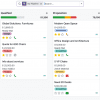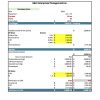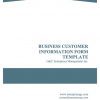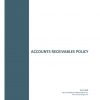The Canadian payroll process is a critical aspect of business operations, involving the accurate calculation and distribution of wages to employees. This process is governed by a complex framework of regulations designed to ensure fairness and compliance. From federal and provincial taxes to various statutory deductions, understanding and adhering to these regulations is paramount for any business operating in Canada.
Federal & Provincial Legislation
Canada’s payroll regulations are influenced by both federal and provincial legislation. While the Canada Revenue Agency (CRA) oversees federal payroll requirements, each province and territory may have additional rules that affect payroll calculations, such as varying minimum wage rates and specific deductions. Employers must be aware of the requirements applicable to their operations, including those related to the Employment Insurance (EI), Canada Pension Plan (CPP), and income tax.
Employment Insurance (EI)
Employment Insurance provides temporary financial assistance to unemployed Canadians who have lost their job through no fault of their own. Employers and employees contribute to EI, with rates determined annually. The contributions are subject to a maximum insurable earnings threshold.
Canada Pension Plan (CPP)
The Canada Pension Plan is a mandatory pension plan to which both employees and employers contribute. It provides participants with a replacement income in the case of retirement, disability, or death. Like EI, CPP contributions are based on an employee’s earnings up to a maximum limit and are split equally between the employer and the employee.
Income Tax
Income tax deductions are based on an employee’s taxable income and must be remitted to the CRA according to a precise schedule. The amount of income tax withheld from an employee’s pay is determined by their total income and the tax brackets set forth by the federal and provincial governments.
Provincial Differences
The specifics of payroll deductions can vary significantly from one province or territory to another, particularly concerning health taxes or premiums, workers’ compensation, and leave entitlements. For instance, Quebec has its own pension plan, the Quebec Pension Plan (QPP), and administers its income tax.
Federal income tax rates for 2024
| Tax Rate | Taxable income threshold |
|---|---|
| 15% | on the portion of taxable income that is $55,867 or less, plus |
| 20.5% | on the portion of taxable income over $55,867 up to $111,733, plus |
| 26% | on the portion of taxable income over $111,733 up to $173,205, plus |
| 29% | on the portion of taxable income over $173,205 up to $246,752, plus |
| 33% | on the portion of taxable income over $246,752 |
Ontario income tax rates for 2024
| Tax Rate | Taxable income threshold |
|---|---|
| 5.05% | on the portion of taxable income that is $51,446 or less, plus |
| 9.15% | on the portion of taxable income over $51,446 up to $102,894, plus |
| 11.16% | on the portion of taxable income over $102,894 up to $150,000, plus |
| 12.16% | on the portion of taxable income over $150,000 up to $220,000, plus |
| 13.16% | on the portion of taxable income over $220,000 |
Payroll Process
The payroll process involves several key steps:
- Employee Information Collection: Gathering necessary information from employees, including Social Insurance Numbers (SIN) and completed tax forms.
- Payroll Calculation: Calculating gross pay based on hours worked and any other earnings, then deducting statutory and other deductions to arrive at net pay.
- Issuing Pay: Distributing earnings through direct deposit or checks on the designated paydays.
- Remitting Deductions: Remitting CPP, EI, and income tax deductions to the CRA along with employer contributions.
- Reporting: Preparing and filing the necessary payroll reports to government agencies, including T4 slips to employees for income tax purposes.
Record Keeping and Compliance
Employers are required to keep detailed payroll records for each employee for a minimum of six years. These records should include information on hours worked, wages paid, and deductions made. Regular audits and inspections can occur, making compliance with record-keeping regulations crucial.
Conclusion
The Canadian payroll process is intricate and requires meticulous attention to ensure compliance with all federal and provincial regulations. By understanding the essentials of payroll deductions, contributions, and the overall process, employers can navigate these complexities effectively. Staying informed about legislative changes and seeking guidance from payroll professionals or services can also help businesses maintain compliance and avoid penalties.









